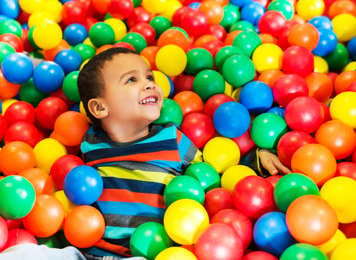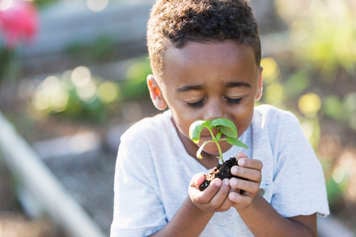Every child develops at their own pace and may feel differently on different days. A child’s behavior can tell you what they need to feel safe.
The 8 sensory systems
Children take in sensory information (e.g. what they see or hear) from the environment around them, make sense of it and use it to help them understand themselves and how they can influence that environment. This helps them to participate in everyday activities such as play or sleep.
There are 8 sensory systems through which children gain information about their environments:

Tactile system (touch): Provides information regarding shape, size, texture, temperature.

Vestibular system (balance and movement): Provides information about where our head is in relation to gravity and about the speed and direction of movement.

Proprioception system (body awareness): Provides information from muscles and joints, tells us where our body is in space and about how much force to use for activities (e.g., we do not have to look to know our legs are crossed).

Visual (sight): Helps children to discern colors, shapes and social cues.

Olfactory (smell): Helps children recognize and enjoy good food and avoid bad food.

Auditory (hearing): Provides information on the quality and direction of sound.

Gustatory (taste): Works with olfactory sense to help recognize foods that taste good and bad.

Interoception (sense of pain, hunger, temperature): Provides information from the body (e.g., thirst, sleepiness).
For example, gentle touch (tactile system) can be calming as opposed to tickling which can be alerting; slow rocking (vestibular system) at bedtime can be calming; running and climbing can be alerting or organizing and help us to attend (pay attention/concentrate) and learn.
How children perceive sensory information
It is important to understand how individual children perceive sensory information. With poor processing, children may bump into objects or classmates (vestibular and proprioceptive systems), not having developed a good awareness of where their bodies are in space.
Some children may overreact to sensory input. For example, they may become more agitated or distressed than other children when they hear loud noises or are at parties, or in reaction to clothing labels (tactile) which may feel like knives cutting into their skin.
Other children may underreact to sensation. For example, they do not notice pain (tactile) after being burned or bumped into. Some crave more calming input such as slow rhythmical movement (vestibular) while others may crave more aggressive and alerting input such as rapid movement and wild swinging.
Observe your child to learn what they avoid or seek. There are no rules that apply to everyone. Individualized programs are necessary. Children may feel and behave differently from one day to the next. Follow your child’s lead and progress slowly to help them become used to sensory inputs that may be perceived as uncomfortable. Ensure their environment is safe to encourage them to develop.
Sensory activitiesOrganize the suggestions below around typical daily routines so that they are easier to carry out. Watch for reactions to play. If your child becomes wild or unsafe, they may be over stimulated. Deep hugs or pressure, and slow rocking (calming) are useful strategies to try at such times.
Choose an activity based on your child’s individual needs. Vary play and ideas. Set up the play space to ensure the safety of your child. Always stay nearby and watch as your child climbs, runs and jumps.
| Sensory system | Sensory activities |
|---|---|
| Tactile (touch and deep pressure) |
|
| Vestibular |
|
| Proprioception (Heavy work with muscles and joints) |
|
| Visual |
|
| Olfactory |
|
| Auditory |
|
| Gustatory | Give your child different foods to stimulate their taste buds:
Encourage oral-motor stimulation in your child with different textures and flavours:
|
| Interoception |
|
Calming versus alerting activities
Be aware of what calms your child versus what wakes them up or alerts them.
Calming activities:
- Slow rocking, or swinging; calm rhythmical movement
- Heavy work with muscle and joints such as crawling through lycra tunnel, pushing a heavy weighted toy
- Joint compression; massage; weighted lap animals
- Finger-fidget activities: Koosh ball, fidget balls, therapy putty
- Vibrating pen or toy
- Mat or pillow sandwich (child is in sandwich, and pulls self out when done)
- Bean bag chair
- Soften or dim the lights
- Soft music, classical, white noise, decreased noise
- Calming essential oils (e.g. lavender)
- Sucking and chewing
- Sitting in tent or under table with blanket draped over it
- Lycra clothes
- Warm bath
- Proprioception and deep pressure activities
Alerting activities:
- Jumping, bouncing, swinging, climbing, running
- Fast movement
- Loud music, rock music
- Eating crunchy or sour food
- Bright lights
- Alerting essential oils (e.g. grapefruit)